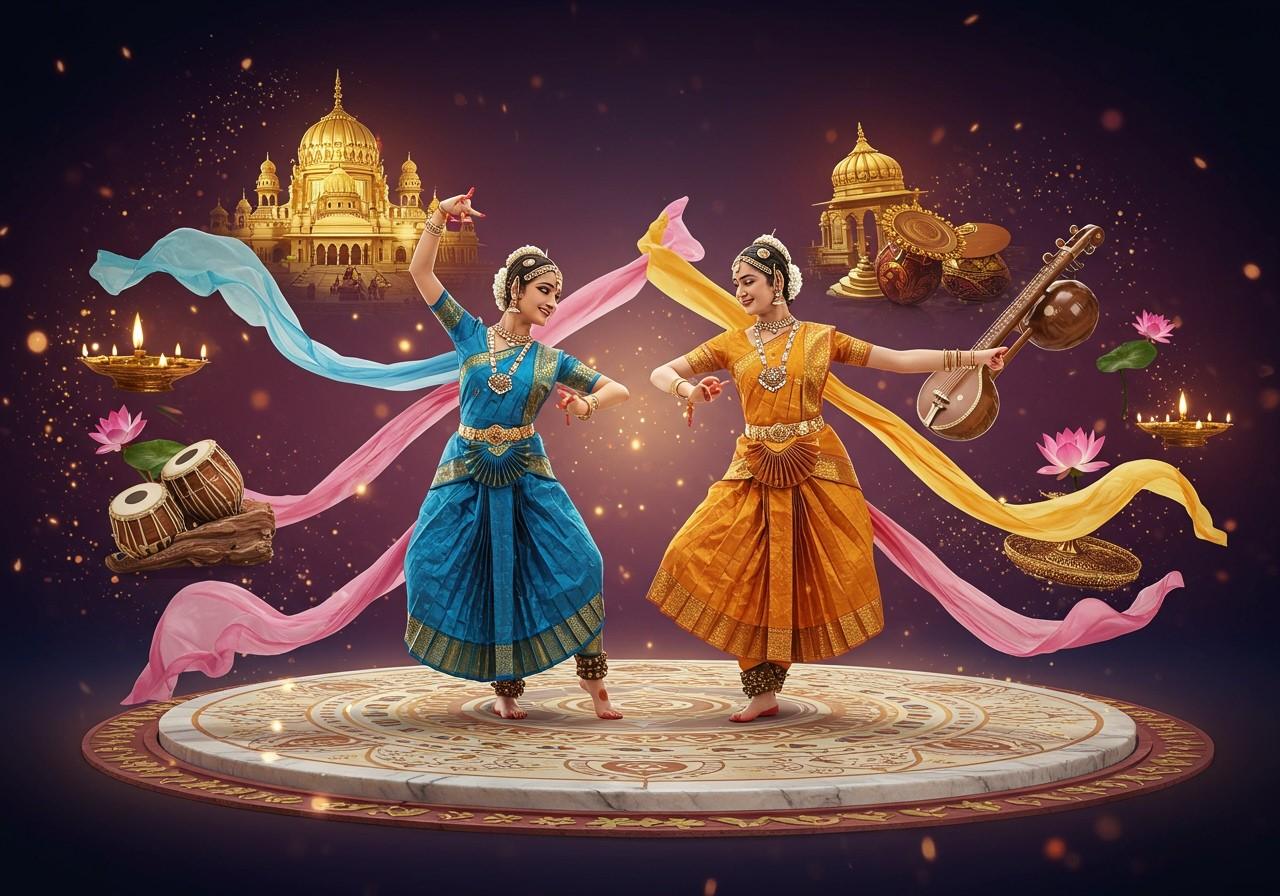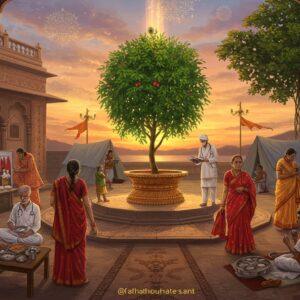Historical Context of Cultural Harmony and Exchange
Cultural Interactions in Medieval India

The Mughal era stands out as a period of significant cultural blending between Hindu and Muslim traditions. This era witnessed the creation of architectural marvels like the Taj Mahal, a breathtaking synthesis of Islamic, Persian, Ottoman, and Indian architectural elements. The intricate details and grandeur of the Taj Mahal serve as a testament to the rich cultural exchange of the time.
Extensive trade routes, such as the Silk Road, played a vital role in facilitating cultural exchange. These routes were not merely conduits for goods but also for the exchange of ideas, beliefs, and artistic styles. The flow of commodities and knowledge along these routes significantly enriched Indian culture.
Spiritual leaders, including Sufi saints and figures from the Bhakti movement, were instrumental in fostering mutual respect and understanding. Their teachings emphasized love, unity, and the common ground between different faiths, promoting a sense of harmony and tolerance.
The influence of Persian language and literature is deeply embedded in Indian culture. Numerous Persian words have been integrated into Hindi and Urdu, enriching the linguistic landscape and demonstrating the lasting impact of cultural exchange. This linguistic fusion reflects the close interactions between the two cultures.
The shared celebration of festivals like Diwali and Eid by people of different faiths exemplifies the cultural unity that binds the nation. These festivals transcend religious boundaries and serve as occasions for shared joy and celebration, reinforcing the bonds of community.
Royal patronage during this period played a crucial role in the development of composite musical styles, such as Hindustani classical music. This genre beautifully blends elements from various traditions, showcasing the harmonious integration of diverse musical influences.
Synthesis of Hindu and Muslim Culture
Unique Cultural Practices
Indo-Islamic architecture stands as a striking example of cultural fusion. This architectural style seamlessly merges intricate carvings and calligraphy from both Hindu and Muslim traditions, resulting in visually stunning structures that embody the spirit of cultural harmony.
Mughal cuisine has become an integral part of Indian culinary heritage. Dishes like biryani and kebabs, introduced during the Mughal period, are now widely enjoyed and represent a delicious testament to cultural exchange. The rich flavors and aromatic spices of these dishes have become synonymous with Indian cuisine.
The blending of artistic traditions is evident in the realm of miniature painting and the incorporation of Persian aesthetics into Indian art. These influences have led to the development of unique artistic expressions that reflect the harmonious interplay of different cultural sensibilities.
Musical traditions have intertwined to give rise to new genres like Qawwali and Ghazal. These musical forms showcase the rich cultural exchange between Hindu and Muslim communities, demonstrating the power of music to bridge cultural divides.
The evolution of clothing styles reflects the blending of Mughal and Rajput attire. The fusion of these distinct fashion traditions has resulted in unique garments that incorporate elements from both cultures, creating a distinctive style that embodies cultural harmony.
Interfaith marriages symbolize social harmony and have contributed to the emergence of new cultural practices. These unions represent a beautiful coming together of different traditions, fostering mutual understanding and respect between families and communities.
Shared public spaces like markets and gathering places have always been important for fostering everyday cultural exchanges. These spaces serve as melting pots where people from diverse backgrounds interact, share their customs, and build relationships, contributing to a vibrant and interconnected society.
Modern Cultural Exchange Programs
Promoting Cultural Harmony Today
Cultural exchange programs play a crucial role in promoting interaction and understanding between communities. Initiatives like student exchange programs and cultural festivals create opportunities for people to learn about different cultures firsthand, breaking down stereotypes and fostering empathy.
Government and NGO initiatives are essential for promoting interfaith dialogue and cultural understanding. These organizations work to create platforms for communication and collaboration between different communities, building bridges of trust and respect.
Digital platforms have become powerful tools for connecting people across cultures. Online forums, social media, and educational websites provide access to information about diverse traditions and facilitate cross-cultural communication, fostering a sense of global community.
Social media plays a significant role in spreading awareness about cultural practices and fostering a global community. These platforms provide a space for sharing cultural experiences, promoting dialogue, and celebrating the richness of human diversity. Poojn.in actively engages on social media to connect with customers and share valuable insights into cultural traditions.
Educational institutions are vital for promoting multicultural curricula that celebrate diversity. By incorporating diverse perspectives and cultural content into educational programs, schools equip students with the knowledge and understanding necessary to navigate an increasingly interconnected world.
These collective efforts contribute to a vibrant cultural landscape where traditions are respected, diversity is celebrated, and individuals are empowered to embrace their cultural heritage. This understanding is particularly relevant for those who value tradition and seek authentic ritual items, which can be conveniently accessed through online platforms like Poojn.in.
Poojn.in: Supporting Cultural Harmony Through Authentic Ritual Items
Poojn.in is proud to support the preservation and promotion of cultural harmony by offering a wide selection of authentic puja supplies and ritual items. We understand the importance of maintaining traditions and provide a convenient platform for individuals to access the necessary items for their religious and cultural practices.
For those seeking traditional items related to the Ashoka tree for religious ceremonies, Poojn.in offers a curated collection of:
- Pure Ashoka flowers for religious decorations and ceremonies, sourced ethically and sustainably.
- Traditional puja items specifically for Lord Hanuman worship, crafted with attention to detail and reverence for tradition. Explore our collection of puja items.
- Authentic mantra books and spiritual guides, providing valuable resources for individuals seeking to deepen their understanding of religious practices. Learn more about spiritual growth resources.
- Complete puja sets for various religious rituals, carefully curated to ensure all necessary items are included. Browse our puja sets.
Our platform brings together a diverse range of religious supplies from both Hindu and Buddhist traditions, making it easier for individuals to access sacred items for their spiritual practices. We are committed to ensuring that all products are sourced respectfully and meet the highest quality standards. For those observing Mangal Dosha remedies, we provide specialized puja items and materials needed for the rituals, along with detailed product descriptions to guide customers on their proper usage and significance. Visit Poojn.in to explore our extensive collection.
Embracing Cultural Unity in Modern Times
Cultural harmony and exchange remain essential aspects of India’s rich heritage. As we celebrate the beautiful tapestry of traditions that have shaped our nation, it’s crucial to continue fostering these connections in the modern world. Participating in cultural exchange programs, supporting government and NGO initiatives, and utilizing digital platforms are vital ways to promote understanding and respect among diverse communities.
Educational institutions play a key role in educating the younger generation about the value of diversity. By embracing these efforts, we ensure the spirit of cultural unity remains strong. In today’s fast-paced world, online shopping offers a convenient way to access authentic ritual items that hold deep significance in our traditions. By acknowledging our rich heritage and incorporating modern conveniences, we can keep our cultural practices alive and thriving.
Let’s continue to build bridges of understanding and celebrate the diverse tapestry of India. Together, we can create a harmonious society where traditions are honored and diversity is cherished.
FAQs on Cultural Harmony and Exchange: Interactions That Build Bridges
What is Cultural Harmony and Exchange? Cultural Harmony and Exchange involve the positive interaction, sharing of ideas, and mutual influence between different cultures. This process cultivates mutual respect and understanding among diverse communities.
Why is Cultural Harmony important? Cultural Harmony is crucial for promoting peace, reducing conflicts, and fostering cooperation among diverse cultural groups. It creates cohesive societies where everyone feels included and respected.
How do interactions build bridges between cultures? Interactions bridge cultures by enabling people to share traditions, values, and practices. This exchange dismantles stereotypes and misconceptions, fostering unity and respect.
What is the synthesis of Hindu and Muslim culture? The synthesis of Hindu and Muslim culture represents the blending of traditions, practices, and values from both religions. This fusion is visible in art, music, cuisine, and festivals, creating a unique shared cultural heritage.
Can you give an example of cultural exchange between Hindus and Muslims? Joint celebration of festivals exemplifies cultural exchange. Many Hindus participate in Eid, while many Muslims join Diwali festivities, strengthening bonds and understanding.
How can individuals contribute to cultural harmony? Individuals can foster cultural harmony through open-mindedness, respect for other cultures, and participation in cultural exchanges. Learning about and appreciating diverse traditions helps build a more inclusive society.
What are the benefits of cultural exchange? Cultural exchange increases cultural awareness, enhances creativity, and strengthens social bonds. It broadens individual perspectives and fosters global citizenship.
How does cultural harmony impact society? Cultural harmony creates peaceful, cooperative environments. It encourages diversity and inclusion, leading to social stability and economic growth, making societies more resilient.


